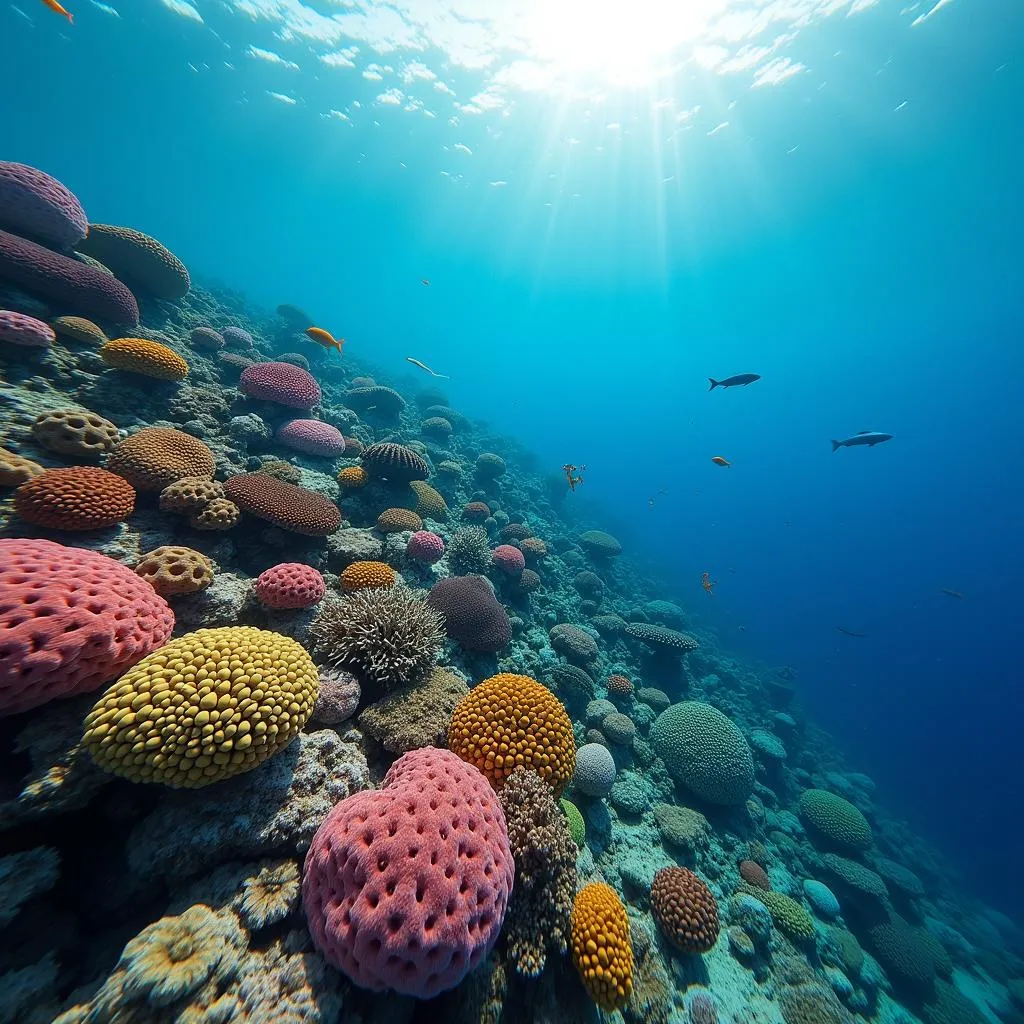In the PTE exam, the Summarize Written Text task in the Speaking & Writing section is crucial for evaluating your skills in comprehending and condensing written content. One of the popular topics in this section of the PTE revolves around Ecological Restoration And Climate Change. Here’s how you can effectively practice and improve using sample questions and model answers, along with a deep dive into essential vocabulary and grammar tips.
Sample Question 1: Ecological Restoration and Climate Change
Ecological restoration refers to the process of assisting the recovery of ecosystems that have been degraded, destroyed, or otherwise impacted by human activity or natural events. The goal is to reestablish the structure and function of an ecosystem, which includes promoting biodiversity and enhancing the resilience of the area. In the context of climate change, ecological restoration plays a vital role, particularly in mitigating its adverse effects. Restoring forests, wetlands, and oceans not only enhances carbon sequestration efforts but also improves the adaptive capacity of the systems. For instance, reestablishing coastal mangroves that have been foundational to protecting shorelines helps protect human populations from rising sea levels and storm surges, thereby reducing the impact of climate events.
 Mangrove restoration mitigates climate change effects and protects shorelines from rising seas
Mangrove restoration mitigates climate change effects and protects shorelines from rising seas
Summarize the text in one sentence.
Model Answer 1 (Band 90):
Ecological restoration is crucial in addressing the negative impacts of climate change by enhancing biodiversity, promoting carbon sequestration, and improving ecosystems’ resilience to environmental stressors.
Evaluations:
- Content: The answer encapsulates key points related to both ecological restoration and its role in combatting climate change by addressing resilience and biodiversity effectively.
- Form: The answer adheres to the one-sentence requirement and is well-structured.
- Grammar: Excellent use of complex sentence structure and accurate grammar.
- Vocabulary & Spelling: High-level vocabulary such as “sequestration” and “resilience” is used correctly.
Model Answer 2 (Band 75):
Restoring ecosystems is important to mitigate climate change effects by increasing carbon capture and protecting coastal areas.
Evaluations:
- Content: Captures the essence of restoration and climate mitigation but misses the complexity of biodiversity and ecosystem resilience.
- Form: Correctly structured in one sentence.
- Grammar: Mostly accurate but simpler structures used.
- Vocabulary & Spelling: Employs basic terms like “increase” and “protect”, lacking more specific details like “biodiversity”.
Model Answer 3 (Band 60):
We can stop climate change by fixing damaged environments like forests and coasts.
Evaluations:
- Content: Overly simple and incomplete—does not address the specific mechanisms of restoration like carbon sequestration or ecological resilience.
- Form: One sentence, but too short and lacks detail.
- Grammar: Grammatically correct but basic.
- Vocabulary & Spelling: Simple and lacks sophistication; terms like “fixing” are colloquial instead of academic.
Sample Question 2: Ocean Restoration and Climate Change
Ocean ecosystems play a significant role in regulating the Earth’s climate by absorbing carbon dioxide and providing essential services like food and protection to human populations. However, these ecosystems are increasingly threatened by climate change, with rising ocean temperatures, ocean acidification, and overfishing disrupting their balance. As a result, initiatives focused on restoring ocean ecosystems such as coral reefs and promoting sustainable fishing practices are being emphasized. Such ecological restoration efforts are not only crucial for conserving marine biodiversity but also for mitigating further damage caused by global climate changes.
 Ocean restoration focusing on coral reefs to combat climate change impacts
Ocean restoration focusing on coral reefs to combat climate change impacts
Summarize the text in one sentence.
Model Answer 1 (Band 90):
Restoring ocean ecosystems is vital for combating climate change, as these efforts help mitigate problems like ocean warming and acidification while promoting sustainable fishing and protecting biodiversity.
Evaluations:
- Content: The summary addresses both the threats posed by climate change and the restoration efforts, such as sustainable fishing.
- Form: Correct format with proper sentence structure.
- Grammar: Advanced grammatical elements are used accurately.
- Vocabulary & Spelling: Includes key terms like “ocean warming”, “acidification”, and “biodiversity”.
Model Answer 2 (Band 75):
Ocean restoration is important to fight climate change by reducing the harm from rising temperatures and overfishing.
Evaluations:
- Content: Covers basic information but misses key aspects of the restoration process, like sustainable fishing or acidification mitigation.
- Form: Well-structured, meets format requirements.
- Grammar: Accurate but simpler.
- Vocabulary & Spelling: Adequate but basic vocabulary.
Model Answer 3 (Band 60):
We can save marine animals by protecting corals and stopping ocean warming.
Evaluations:
- Content: Simplified and narrowly focused, missing overall restoration themes like sustainable fishing.
- Form: One sentence but overly simplistic.
- Grammar: Correct but not diverse in structure.
- Vocabulary & Spelling: Colloquial and not academically appropriate.
Key Vocabulary & Grammar Tips:
-
Biodiversity /ˌbaɪoʊdaɪˈvɜːrsɪti/ – (n.) The variety of life in an ecosystem. Example: Restoration projects increase biodiversity in degraded habitats.
-
Carbon Sequestration /ˈkɑːrbən/ /ˌsikwəsˈtreɪʃən/ – (n.) The process of capturing and storing atmospheric carbon dioxide. Example: Planting trees enhances carbon sequestration efforts.
-
Resilience /rɪˈzɪliəns/ – (n.) The capacity of ecosystems to recover from disturbance. Example: Restored wetlands have greater resilience to floods.
-
Acidification /əˌsɪdɪfɪˈkeɪʃən/ – (n.) The process by which the ocean becomes more acidic, often due to increased CO2. Example: Coral reefs suffer from ocean acidification.
 Coral reefs threatened by ocean acidification due to increased CO2 levels
Coral reefs threatened by ocean acidification due to increased CO2 levels
-
Overfishing /ˌoʊvərˈfɪʃɪŋ/ – (n.) The depletion of fish stocks through excessive fishing. Example: Sustainable fishing helps reduce the adverse effects of overfishing.
-
Ecosystem /ˈiːkoʊˌsɪstəm/ – (n.) A biological community of interacting organisms and their environment. Example: Protecting ecosystems is important in climate change mitigation.
-
Mitigation /ˌmɪtɪˈɡeɪʃən/ – (n.) The action of reducing the severity or seriousness of something. Example: Ecological restoration is a significant form of environmental mitigation.
-
Sustainable /səˈsteɪnəbl/ – (adj.) Capable of being maintained over the long term without harming the environment. Example: Sustainable fishing ensures the preservation of marine life.
-
Importance /ɪmˈpɔːrtəns/ – (n.) The state or fact of being of great significance. Example: The importance of protecting ecosystems cannot be overstated.
-
Degradation /ˌdɛɡrəˈdeɪʃən/ – (n.) The process by which ecosystems deteriorate. Example: The degradation of forests leads to a loss in biodiversity.
Conclusion:
The ability to efficiently summarize written text in the PTE exam is essential, especially on topics like “Ecological Restoration and Climate Change.” Revising concepts related to ecosystem recovery, climate adaptation, and biodiversity restoration will offer a strong foundation for the exam. By practicing with sample questions, reviewing model answers, and expanding your vocabulary, you get closer to achieving your desired score.
For a broader understanding of climate-related topics, make sure to also explore ideas around Ocean ecosystems and global climate and Ocean conservation and sustainable fishing.